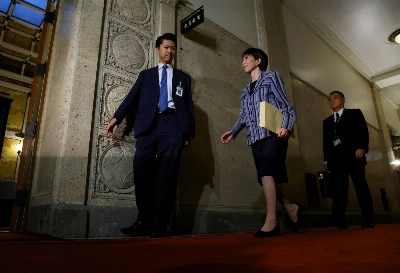On Wednesday, NHK will explain one of the great ironies of the Pacific War on its history series, "Sono Toki -- Rekishi ga Ugoita" (That Time -- History was Changed; NHK-G, 9:15 p.m .). On Apr. 7, 1945, the Yamato, the biggest battleship ever built by the Japanese Imperial Navy, sank in the South Pacific during what was its first and last combat mission.
Legendary for its nine 46-centimeter cannons, the Yamato was perhaps too big. The Imperial Navy's claim that it was "indestructible" didn't take into consideration the changes that warfare had undergone during World War II. Traditionally, battleships fought with other ships in broadside attacks, but no real attention was paid to defending the ship from aerial attacks.
The Imperial Navy probably knew this. The naval battles of Midway, Leyte, and the Marianas were characterized by fighter plane attacks, and the Yamato didn't participate. Even Pearl Harbor proved how defenseless ships were against nimble airplanes. In a sense, the Yamato was a white elephant, trotted out as a last resort that failed in a way that could have been predicted. NHK explains its sinking using new information, eyewitness testimony, and computer graphics.


















With your current subscription plan you can comment on stories. However, before writing your first comment, please create a display name in the Profile section of your subscriber account page.